Old Man Plains Research Station, Alice Springs
The Old Man Plains Research Station (OMP), managed by the Department of Industry, Tourism and Trade, is located in the semi-arid rangelands approximately 20km south-west of Alice Springs in the Northern Territory. The research station provides a unique and valuable opportunity for conducting long-term research directly relevant to the extensive beef cattle industry in the region. The facility also provides opportunities for training and demonstration of best practice rangeland and animal management practices.
A unique rangelands research station | Natural resources and land capability
National Arbovirus Monitoring Program | Wild dogs | Soil conservation
Fire | Research projects | Field days | Resources and articles
History
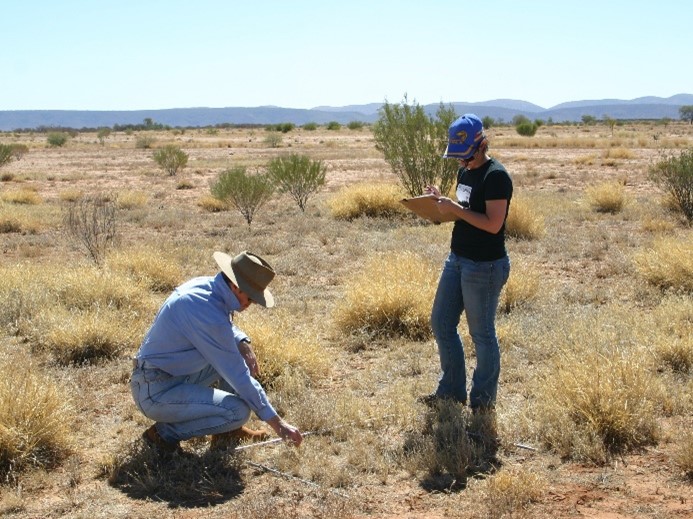
The land on which the research station sits has a long and varied history. Old Man Plains is on Arrernte country, immediately adjacent to the Waterhouse Range which has significant spiritual importance to western and central Arrernte people. There are many dreaming stories and important sites located in these ranges and adjacent areas. Arrernte people are strongly connected to this country and have a long history of living, and working, on this land.
In the early 1860s, John McDouall Stuart explored the region with the task of finding a suitable route for the proposed Overland Telegraph Line. Stuart identified a route through the Waterhouse Range and the telegraph line was ultimately completed in 1872.
In 1873, in what was considered one of the most extraordinary droving feats in Australia’s history, William Gilbert, Ted Bagot and James Churchill-Smith drove 1000 head of cattle from Adelaide to the MacDonnell Ranges in Central Australia.
William Gilbert went on to obtain the pastoral lease of Owen Springs Station, one of the first issued in Central Australia. The name, Old Man Plains, comes from a poem, “The Warrigal Run”, written in 1897 by Alex McLeod, who worked on Owen Springs Station:
“So before reaching the scrub, we stopped them
And started them for the Old Man Plain,
If in that direction we could only keep them.
A victory we must surely gain.”
The station changed hands several times until 2002 when it was acquired by the Northern Territory Government. Much of the property was declared the Owen Springs Reserve for conservation and recreation purposes with the area now known as Old Man Plains Research Station being utilised for the development of a facility for pastoral demonstration and research.
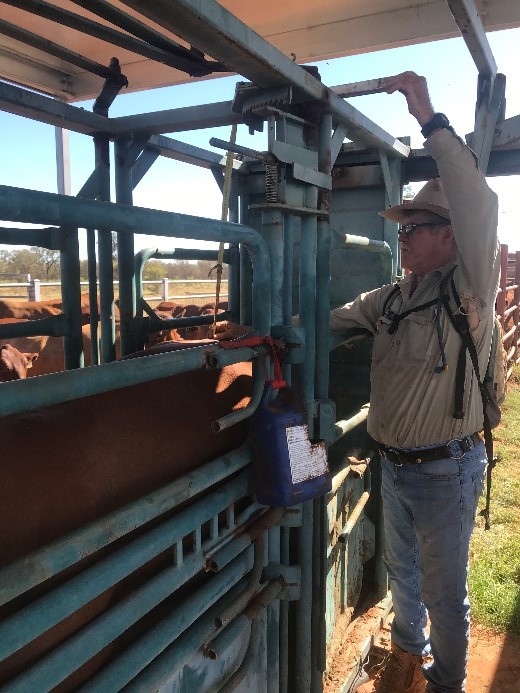
A unique rangelands research station
The 522km2 research station is situated in the semi-arid zone of Australia. The arid and semi-arid environments make up 70% of Australia’s rangelands and are characterised by low and unreliable rainfall and old, nutrient poor soils. Grazing of native pastures is the dominant agricultural industry in Australia’s rangelands.
OMP has significant value as a research facility for cattle production throughout Australia’s arid and semi-arid rangelands. The importance of this research facility was first recognised by industry leaders, as well as the research fraternity, at the Northern Beef Research Update Conference held in Darwin in August 2011. Since then the National Beef Production Research, Development and Extension Strategy also identified OMP as a research station of national importance.
When the research station was established in 2004, it had limited infrastructure, no stock and native pastures that were mostly in poor land condition. Since then, OMP has been developed in accordance with best practice principles for Central Australia and serves as a valuable demonstration site for cattle husbandry, technological advances and land management practices. OMP is now beginning to realise the benefits of hosting long-term research trials that encompass a broad range of seasonal conditions.
The natural resources and land capability
Climate
The annual median rainfall for the research station is 237mm. Most pasture growth occurs during the warmer months from October to March with a median rainfall of 172mm. As a rule of thumb, at least 50mm over a two week period is required to generate pasture growth, yet rainfall in Central Australia is unreliable and often occurs as small, isolated events. For OMP and surrounding regions, a typical year might only have one, maybe two growth events.
Land resources

Like most pastoral properties in Central Australia, OMP has a variety of land types with differing pastoral values. The most pastorally productive land types are the calcareous landscapes that grow highly productive annual oatgrass pastures, and the broad drainage areas with mulga and ironwood over a mixture of grasses. Buffel grass has increased in abundance across the property and is often particularly dense in the drainage areas. The rest of the property consists of gently undulating sandy rises with mulga and whitewood over erect kerosene grass and broad sandy rises with mulga over spinifex.
The northern and southern boundaries are defined by rugged hills that are largely inaccessible to stock. They have no real forage potential but are pastorally valuable as they significantly reduce the potential for feral animals such as bulls, horses and camels to enter the property. Owen Springs Reserve occupies the western boundary of the research station and the north-eastern boundary runs into the Quarantine Reserve adjacent to Alice Springs. On the eastern side the station abuts the Stuart Highway.
Land condition
When established for research in 2004, much of the landscape was in poor land condition. The key features were significant areas of sheet erosion and some gully erosion, areas of shrub thickening, low pasture yields and poor plant vigour relative to rainfall received and a predominance of less palatable species. Where practicable, land rehabilitation earth works were constructed to reinstate natural drainage patterns on roads and fence lines. Soil conservation techniques such as diversion banks and ponding banks were also used to slow and re-direct overland water flow in areas with active sheet or gully erosion.
An unplanned, but extremely useful fire event in 2011, reduced the shrub density in the eastern paddocks and, in conjunction with appropriate stocking rates, land condition and pasture value has increased in this area. Improvement in land condition is mostly recognised through a broad scale increase in pasture yield and quality. The most exciting aspect of this improvement in land condition is that it has occurred in conjunction with grazing a highly productive herd. This has been achieved through the application of appropriate stocking rates in relation to the long-term carrying capacity and ability to capitalise on La Niña weather events.

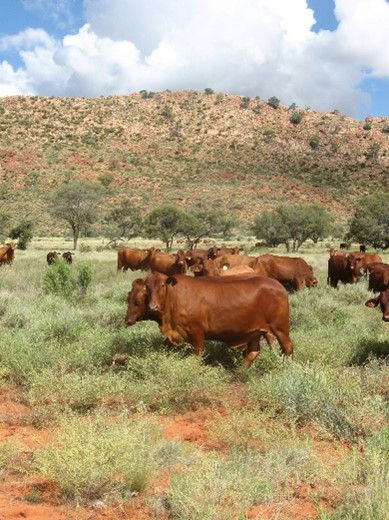
Long-term carrying capacity
The long-term carrying capacity (LTCC) for OMP is based on the recommended Meat and Livestock Australia Grazing Land Management® principles and methods. When the LTCC for OMP was first calculated in 2010, it resulted in an average stocking rate of 2.07 AE/km2 based on pastures within 5km of water. As land condition improves, LTCC can be reassessed.
The cattle
The OMP herd is based on approximately 300 to 400 breeders. These are Droughtmaster infused stock with around 150 cows being registered Droughtmasters. Only purebred Droughtmaster bulls are used in the herd. The foundation herd was originally sourced from department research stations in the Northern Territory and is well suited to Central Australia. In recent decades, there has been a trend in Central Australia to introduce Bos indicus genetics into the more traditional B. taurus herds in order to meet both the southern markets and to take opportunistic advantage of the live export trade.
The OMP herd is free from most serious bovine diseases and is of a documented genotype. These are useful traits for a research herd, giving greater confidence that results are not due to breed differences or disease when investigating rangeland and animal management practices.
In 2022, Akaushi wagyu genetics have been introduced into the herd to further improve carcase traits.
An opportunity to demonstrate best practice
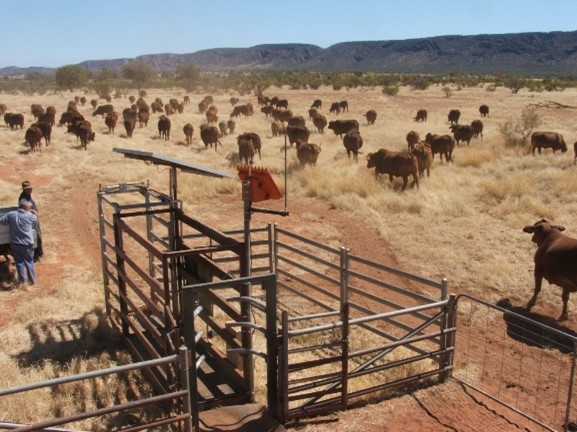
Investing in new management practices or technologies often comes with a degree of uncertainty that can be very daunting. Through research, field days and targeted extension, OMP provides examples of best practice demonstration directly relevant to Central Australian pastoralists.
Technology
As a demonstration site, OMP uses remote telemetry to reduce management costs and has played an important role in developing technology such as the WOW (Walk Over Weighing) products for use on commercial stations. Applications of remote sensing technology to provide real time forage budgeting tools and assess long-term land condition change are also used to assist managers set appropriate stocking rates in an efficient and confident manner.
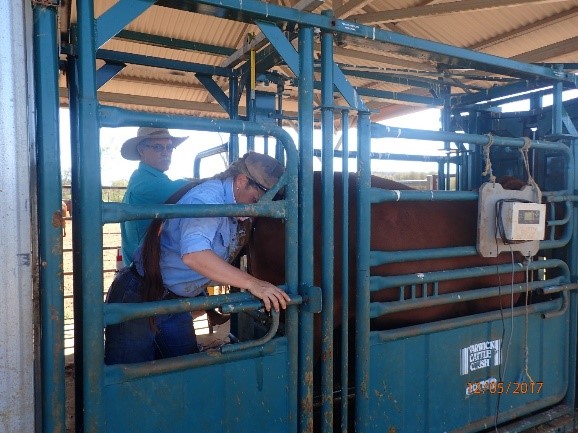
Controlled mating
Controlled mating is an integral part of improved management for efficient weaning, feeding and marketing of cattle from a breeding herd. On OMP, a 3-month mating period with herd bulls not only helps with subsequent managing and marketing of cull bulls and cows, but also provides a tight cohort of young cattle for OMP trials. Calving is timed to occur between September and the end of November to avoid the extreme heat of Central Australian summers.
Weaner management

Weaning is fundamental to both management of cow body condition to promote breeding efficiency and production of well grown, quiet young cattle. At OMP, yard weaning and education of the calves has been undertaken to both demonstrate best practice weaner management, and to prepare young cattle for a national sentinel program, OMP trials, and the OMP bull herd.
Low stress stock handling
Improving herd temperament is strongly emphasised in all decisions from selecting bulls to culling breeders. At OMP almost half the weaner heifers are removed from the herd with only very good quality animals retained when required. All aspects of cattle management on OMP are undertaken with a strong emphasis on animal behaviour and ethical stock training and handling principles. This includes activities such as dedicated weaner training, consideration of preferred social groups, use of laneways to minimise stress and familiarisation practices for sale steers. As a result, the herd has become uniformly quiet and safe to handle. This makes the herd ideal for training purposes undertaken with secondary school and industry-based Rural Operations students.

National Arbovirus Monitoring Program (NAMP)
Since 2010, the OMP breeding herd has also been supplying up to 90 heifers per year for a national monitoring program that is run by the department’s Biosecurity Branch in the Top End and Central Australia.
Wild dogs
There is a minimal intervention policy for managing wild dogs on OMP. The goal is to allow dominant wild dog pairs to establish territories so they keep transitory individuals out of their area and reduce the interaction between dogs and cattle. If there are concerns of possible calf loss to wild dogs in identified hot spot areas then strategic baiting is typically used in these areas prior to the set calving period.
Soil conservation
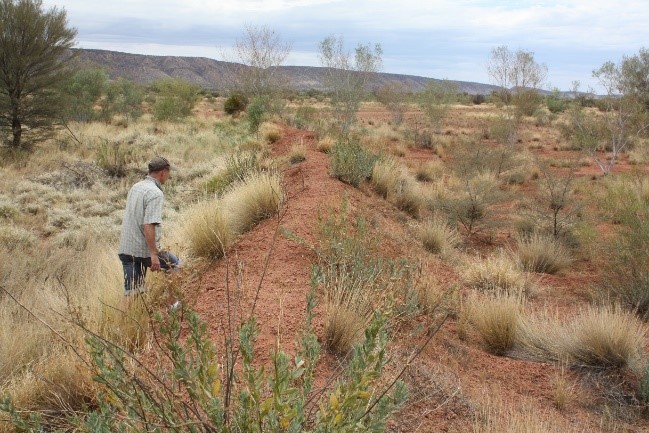
Restoration of degraded landscapes has involved realignment of some roads, removal of windrows and installation of water drainage structures. Ponding banks have also been constructed to catch overland flow and restore pasture productivity on landscapes where overgrazing had resulted in a loss of topsoil. Soil conservation principles (maintaining ground cover and natural water movement patterns) guide all infrastructure placement and maintenance on OMP.
Fire
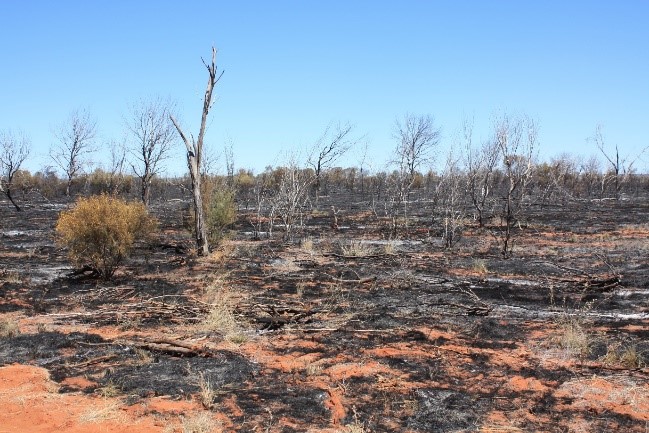
Fire is recognised as a useful tool for improving pastures on OMP although opportunities to use it are limited by seasonal conditions. Areas of shrub thickening have been identified for burning once there is sufficient pasture growth to support an effective burn. OMP provides a useful demonstration site for applying techniques that can be incorporated into a grazing system for example, incorporating fire into a rotation and burning only a portion of a paddock.
Research projects
Quality Graze
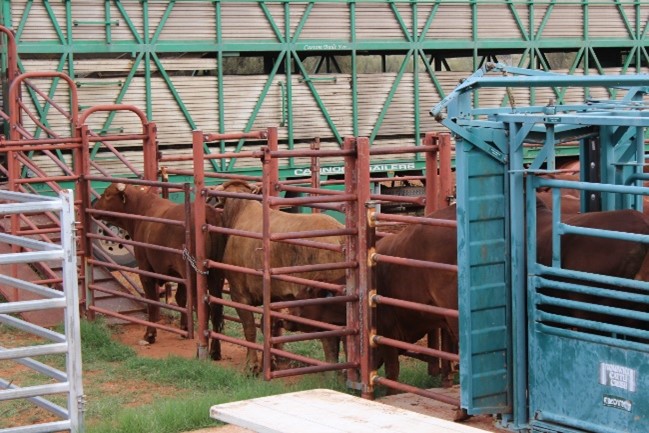
The Quality Graze trial was specifically designed to assess recommended carrying capacity guidelines, investigate the benefits of pasture spelling, and demonstrate production of quality steers regardless of seasonal conditions. After ten years, including the wettest years on record and some of the most extended dry periods, the results are showing that it is possible to run a stable herd of productive breeders and turn off a consistent number of premium quality steers every year. The key features are getting the long-term carrying capacity right, improving land condition and developing a consistent, reliable production system regardless of season. The economics of the OMP system are also investigated in order to develop a relevant and profitable production model.
Benchmarking
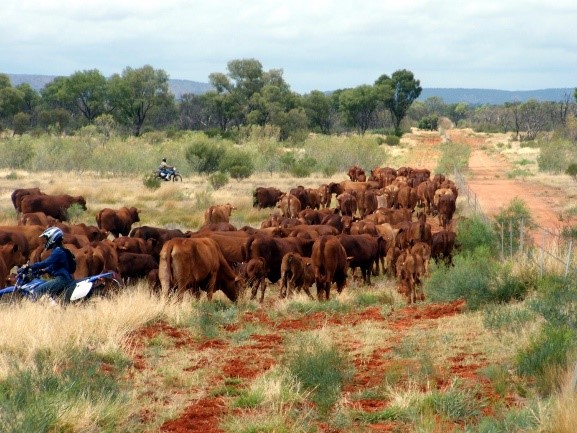
Benchmarking of herd performance is a well-recognised tool to help set and review herd breeding objectives, production goals and strategies to optimise herd performance. Demonstration of benchmarking with an identified mob of (Droughtmaster) breeding cattle on OMP has produced 3-year benchmarks of reproductive performance, production, and herd dynamics. Ongoing collation of herd performance data from all (Droughtmaster-infused) cattle on OMP is contributing to economic and pasture utilisation models for beef cattle in northern Australia.
Field days
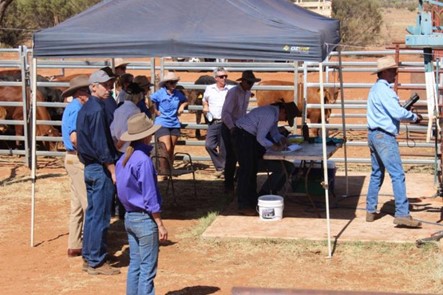
- 2009 OMP Field Day ‘Being in the grass business’
- 2011 OMP Field Day ‘Every cow can have a calf’
- 2013 OMP Field Day ‘Marketing quality beef from quality land’
- 2014 Mini Field Day for Producer Steer Challenge participants
- 2019 OMP Field Day ‘Beyond the dry times’
Resources and articles
Quality Graze project charges ahead with Akaushi Bulls
Value of stocking rates – a long term grazing trial in Central Australia
Central Australia Quality Graze Producer Steer Challenge
Good land condition pays premiums – the Central Australian story
Quality Graze – so much more than a rotational grazing project